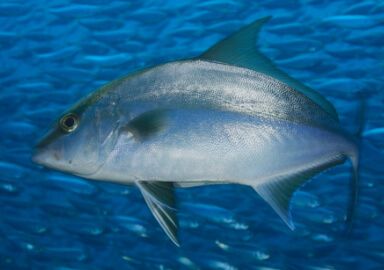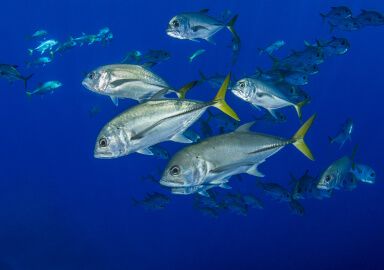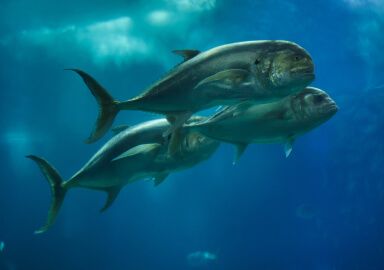Jack
While anglers may use the word “jack” for young northern pike and king salmon, most often it refers to several members of top marine predators.
View 106 listings
106
listings
–
price starting from
13
countries
–
to the nearest trip
Where and When?
All the true marine “jack” species are top fish predators - although some are quite small. Among the larger is the jack crevalle which can reach 1.24 meters (49 in.) and 32 kilograms (71lbs.) and it is a top target for many American extreme sport anglers. They are found in the Atlantic Ocean including the Mediterranean and Caribbean Sea and are mostly a species of shallow and coastal waters. Summer is the best time for this species and they are mostly optical daylight feeders. Almaco jack or longfin yellowtail, one of the other best known “jacks”, has a wider distribution around the world and they are found from close inshore to well offshore. Almaco jack is one of the largest Carangids, attaining 1.6 meters (63 in.) and 60 kilograms (132 lbs.). Sport fishing for jacks is carried out around Australia, South Africa and parts of both seaboards of North America. While juvenile fish can be found fairly close inshore, the larger fish are usually offshore and sometimes at great depths.
About Jack
he jacks belong to the Carangidae family. They have a circumglobal distribution in tropical and temperate oceans and it contains some of the best known and sought after game fish worldwide. With such a wide distribution, the same species might have a number of local names, which can be confusing. The Carangidae are a diverse family with several dozen species but the larger and more popular angling ones, are often called “Jacks” in American waters, “trevalleys” around Australia and “kingfishes” near Africa. In other areas each of these names is often loosely used for a variety of carangid species. All these fish are fierce and energetic predators and are highly prized by sport anglers. The largest Carangid, Caranx ignobilis, is called the Giant Trevally or GT, in Australia, the giant kingfish around Africa and is largely replaced by Caranx hippos, the jack crevalle, in much of the Atlantic Ocean. Another well-known and important carangid is Seriola rivoliana which is known as the almaco jack in the Atlantic Ocean but elsewhere is often called the longfin yellowtail.
How to Catch?
Although the various jacks differ in size, shape, distribution and habits, all are predators, mostly on fish, and they will take a wide variety of lures and bait. Local guides and fishing tackle shops are very useful in advising the best equipment to use for the local species. They can also assist with information on the best times, places and methods. Inshore species may usually be caught on artificial lures, including fly, natural baits and live bait. Jack crevalle can give excellent fights on light to medium tackle while heavy tackle is essential to land large specimens. Offshore species like almaco jack are usually caught from boats and, if large specimens are targeted, then specialised equipment for getting down deep and holding fish is essential. As usual, local knowledge is critically important to maximise the rewards and excitement and minimise the chances of losing the fish of a lifetime.











